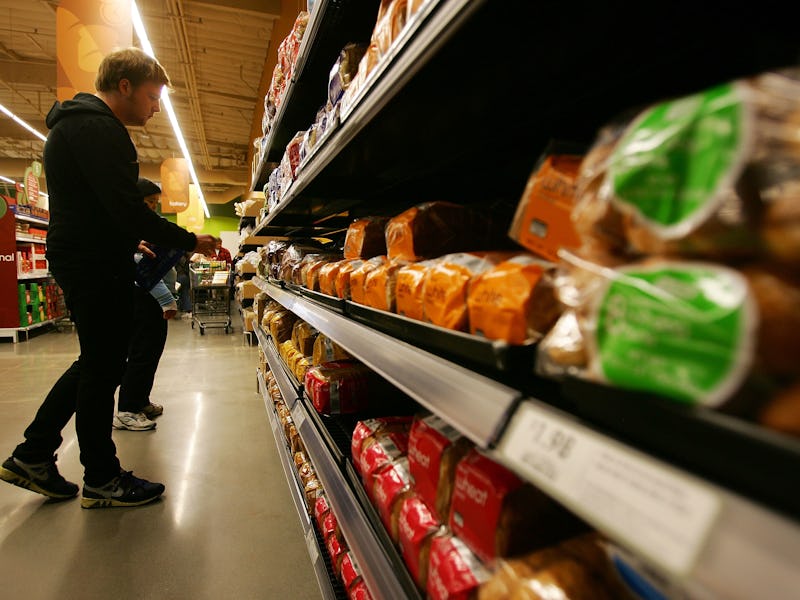Here's How Grocery Store Layouts Are Designed to Separate You From Your Money
If we're not safe here, we're not safe anywhere.

Most of us consider ourselves to be our own worst enemy at the grocery store. If you’re a smart consumer, you’ve learned never to go to the market on an empty stomach, and perhaps you grab a basket rather than a cart to avoid overspending. As it turns out, there’s a lot more the architects of grocery stores do to separate you from as much money as possible.
After you watch this video, you might start looking at grocery stores the same way you do casinos:
According to this unsettling video by Wendover Productions, the mind control begins the very minute you walk through those automatic doors. Because American shoppers have proven that they prefer to shop counter clockwise, entrances are often located to the right, while check-out counters are on the left. Conversely, the United Kingdom’s grocery layout is the opposite. Researchers link this to our habitual nature and the fact that in the UK, drivers travel on the opposite side of the road. The counter-clockwise shopping pattern results in $2 more spent per customer, a stat that’s been repeated over the years but is hard to prove.
Of course, not every grocery store can be the same, but in a traditional layout, you’ll find that products like milk, meat, and eggs are located on the perimeter of the store, rendering you more vulnerable and fully surrounded by temptation. This is specifically designed to expose you to the items that may or may not be on your shopping list.
Aisles are where you really get to feel violated from top to bottom. The principle of “eye-level is buy-level” works to appeal to whoever is most likely to buy what. Sugary, tantrum-inducing cereals will be most readily visible to children while big brand-name cereals are more likely to be located on a middle-to-upper shelf, resulting in more aggravated spending.
You’d think with how much time we spend in grocery stores that we’d have figured this out ourselves. With Americans spending on average, 1.5 times per week, or 78 times a year, the seamless scheme that coerces consumers to spend approximately 2 extra bucks at the supermarket amounts to huge profits.
Take solace in the fact that, for however long you’ve been shopping for your own food, we’ve all been rendered completely powerless to the gleaming, snack filled aisles of the grocery store.